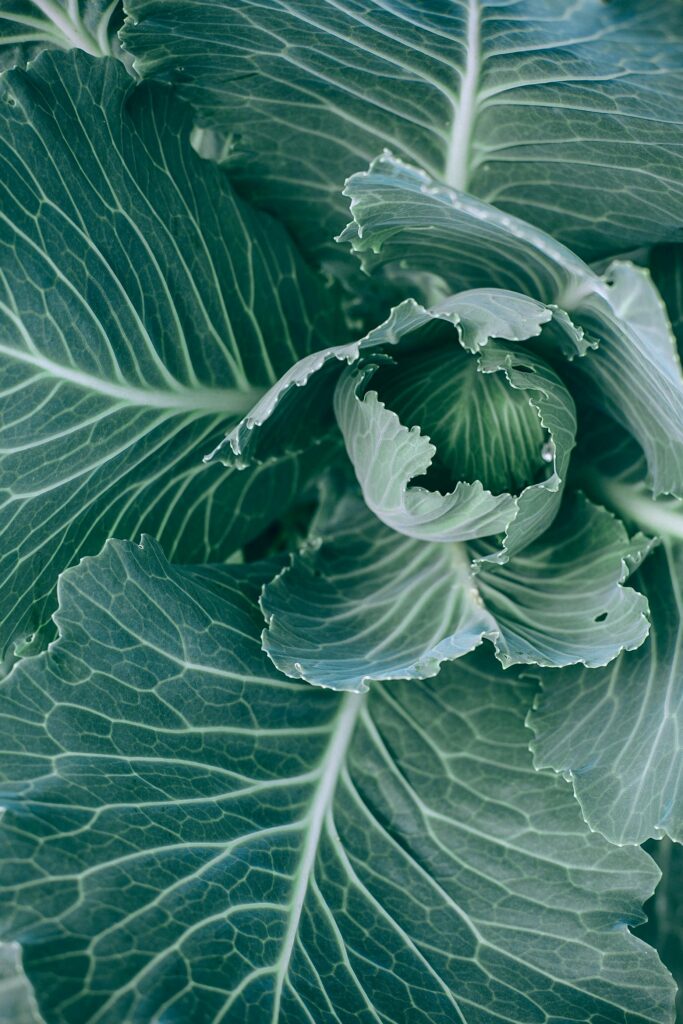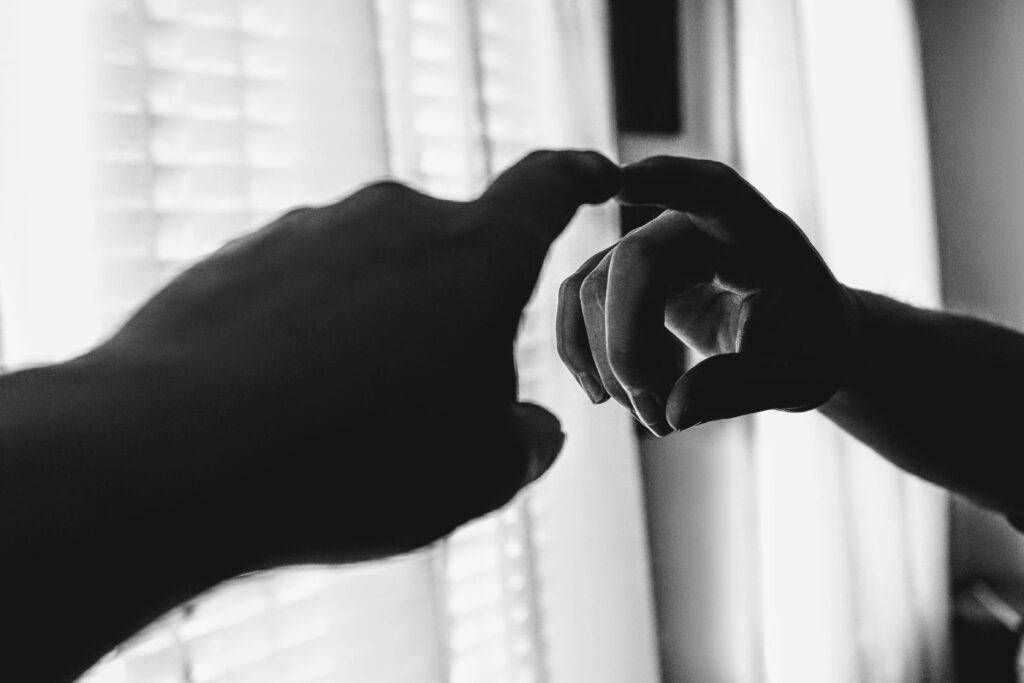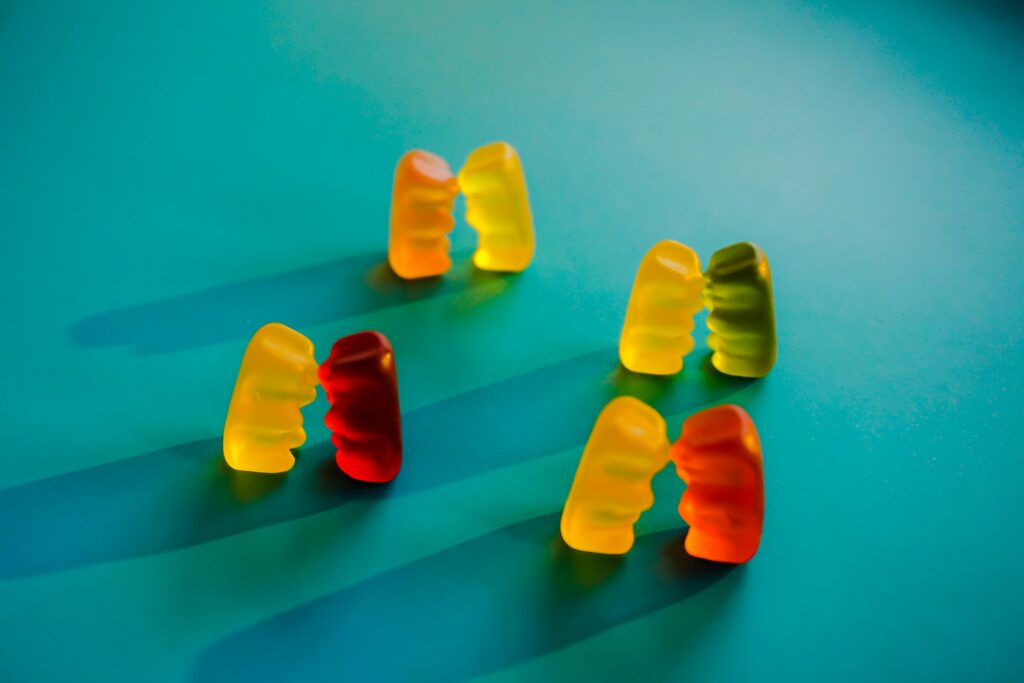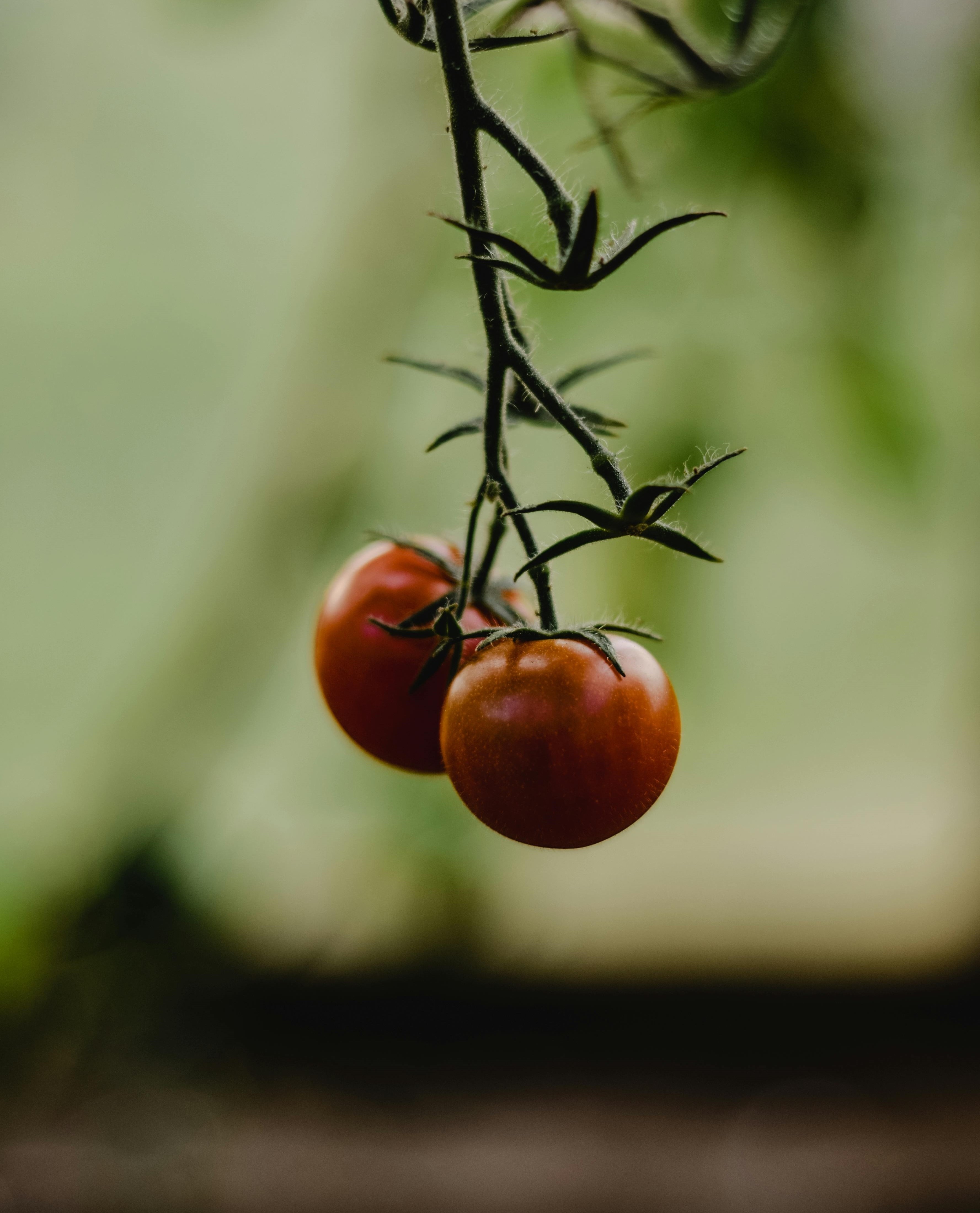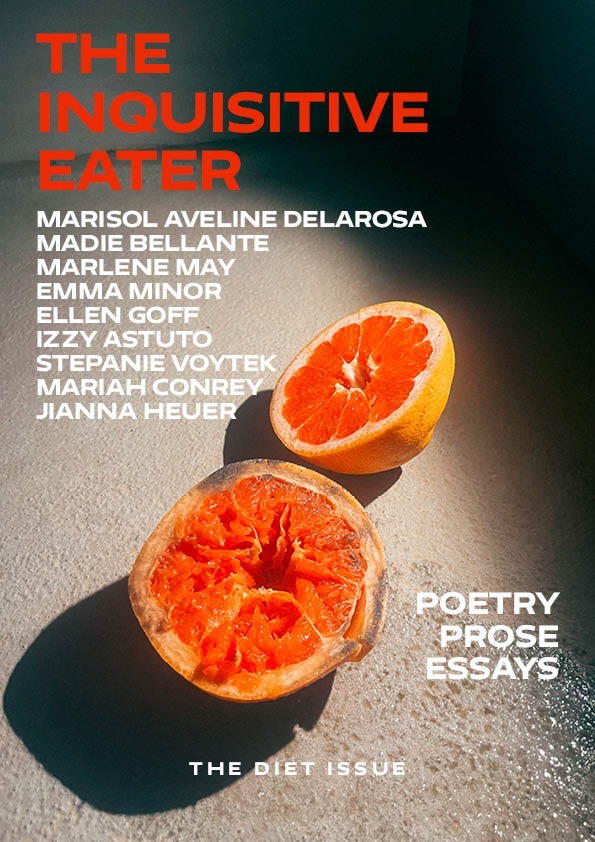I have tried every diet in the book, even the dangerous ones, even the silly ones. My fascination with dieting started at a fairly young age. Like most millennial women, a flat stomach worthy of low-rise jeans and a crop top was marketed to me every time I turned on the television. Like everybody else, I was told that carbs are evil and America Ferrera is fat. I know now that neither is the case.
I come from a large Italian family where the fridge was always full and my mother cooked dinner nearly every night. On Saturday afternoons, we would cut slices of Italian bread for sandwiches, crumbs falling from the loaf like snowflakes. Thick slices of meat and provolone cheese were stuffed inside the bread, often still warm. Some of us would sit, and some of us would stand around the counter, still eating, making a second sandwich on occasion. I am twenty-seven years old, but if my father is making a sandwich, he makes me one, too. If it is a grilled cheese, he always adds a slice of roma tomato to the center, sometimes from his garden, sometimes from the supermarket, and enough butter to allow the bread to turn crisp and golden in the pan.
I also come from a family where diets were discussed and participated in openly and frequently. I come from a family of people who gain weight easily and hold it hard, swelling around our midsections and our faces in times of stress, in times of little sleep. I remember watching my parents pledge themselves to The South Beach Diet when I was young. Before the days of Keto and Whole30, South Beach was a diet developed by a cardiologist to help combat heart disease. It has a simple model, one that many other, newer diets have taken and adapted to fit the current diet science of the day. Its premise is this: two weeks with no sugar, carbohydrates, or starches. This means no pasta or bread. No rice or fruit, either. After the first two weeks, when the person’s “addiction” to sugar has been broken, they can add in whole-grain breads and pastas and fruit – in moderation, of course.
Several years later, my father became a religious follower of the Paleo diet, which, as the same suggests, involves eating like a caveman might, or rather, a caveman with access to a full array of garden vegetables. My dad instituted a “cheat day,” which is not typical of the diet, but was necessary for him and for all of us so that we could continue to make sandwiches around the counter or eat one of our usual pasta dishes together at least once a week. He lost roughly 60 pounds during this time due to the exercise and his diet being reduced to meat, vegetables, and black coffee, nearly exclusively.
The first time I tried the Paleo diet was in high school in order to fit into my prom dress. My mother and I found the dress on the department store rack in a limited number of sizes, the largest available one brought back to the dressing room with me. It was form fitting, a muted red dress with applique flowers with beaded centers. It was perfect. I had to have it. Running my hands up and down the ripples of red fabric, I called my mother into the dressing room to help zip it, sucking and contorting my ribcage to no avail when the zipper came short of closing. My mom assured me that a few weeks of Paleo would do the trick. She bought all the right groceries and packed my lunches for me, and we both breathed a sigh of relief when the dress zipped closed in time for the dance. I missed fried chicken biscuits with honey and hot sauce, and I missed the gooey chocolate chip cookies kept under a heat lamp in my high school cafeteria, but not enough to quiet the buzzing that I could now hear in my ears at the prospect of a smaller body. I had finally lost weight. And I was high on it.
The unfortunate truth, the one that, had my mother known, she would have surely never helped me fit into the prom dress, was that I had already developed an eating disorder several years before that. At the end of my freshman year of high school, I was cut from both the volleyball and the basketball team within a week of one another. My newfound lack of inactivity and general dejection caused me to gain a little bit of weight. Unaware of what an active lifestyle outside of organized sports looked like and unable to skip meals without my family noticing, I developed a fairly severe case of bulimia. My close friends all knew what I was doing, and while they cared, we could all name several other girls we knew doing the same thing. Those of us with this same habit, marked by our shaking hands and constant watery eyes, were propelled forward by the shared desire in 2012 to achieve a “thigh gap,” further exacerbated by scrolling through heavily filtered images of young women with protruding collarbones every time we logged onto Tumblr, or really any part of the Internet. My family was none the wiser to my habits, specifically my nightly ritual. I would retreat upstairs to the bathroom each night after dinner, turn the water on, retrieve the metal tea spoon I kept beneath the sink, and press it towards the back of my throat as I sat on the white tile floor in front of the toilet. I would rinse the spoon afterwards and put it back under the sink, the taste of cold metal still sitting on the back of my tongue. I did this, over and over, each night, for years.
In terms of weight loss, this didn’t work, which is also fairly typical of bulimia. The cycle of binging and purging, as we call it in the business, causes many people with bulimia to maintain a fairly normal weight, something that I, of course, was infuriated by at the time. I knew it wasn’t working. I tried to stop. I kept a note in my phone where I tried to track how long I could last without making myself sick. It took me several months to maintain any streak longer than a week. Eventually, I let myself write “One year” after the last date that I had purged, knowing, deep down, that it wasn’t better, just different, and I had found my new North Star: dieting.
When I went to college, I hugged my family and bulimia goodbye, free to explore all my new opportunities to dwindle myself down. I exercised in excess. I developed fears of certain foods and steered clear. My rituals shifted from gagging myself with a spoon to counting calories, to chewing gum when I was hungry, or having an iced coffee instead of lunch until I was so dizzy, I could hardly see. Sometimes, it worked. Often, it didn’t really. I’ve always been comfortably full in figure, with a little extra weight on my body. Never quite plus size, I am what I hear the youth are calling “mid-size” these days. I have the kind of body where, if I lose weight, it’s always “You look great!” and never “Are you okay?”
The size of my body was my insulation from anyone’s skepticism for the years that I had an eating disorder and the years after when I used dieting to replace my old habits. In my experience, most people, even those that are well-intentioned, do not realize that a person’s size does not dictate whether or not they can have an eating disorder. So I skated by, rarely questioned, wondering if I even “deserved” to say I had an eating disorder if I wasn’t thin. The other insulation from questioning about my dieting was my chronic health issues.
Though never life-threatening, I have struggled with various digestive issues for most of my life, ranging from mild nausea to chronic, involuntary vomiting when certain foods are consumed. I have had a weak stomach since I was a child, something that resulted in many nights spent next to a bucket or throwing up in the driveway most mornings before elementary school. This ongoing issue, worsened by the years of bulimia and coupled with my diagnosis of polycystic ovarian syndrome in my early twenties, caused my diet and weight to be a near constant topic of discussion for myself and any medical professional that crossed my path. For those that don’t know, PCOS is an enormously frustrating disease of the ovaries that drastically affects hormone levels and therefore many different aspects of the body, including weight, sleep patterns, hair loss, acne, and body hair growth. In terms of weight, PCOS makes it exceedingly easy to gain and terribly difficult to lose. It’s recommended that those with PCOS eat both gluten-free and dairy-free and prioritize protein intake and a nearly complete lack of sugar. These recommendations, along with the ever present desire to make myself smaller, led me to just about every diet in the book, from gluten-free to Whole30 to vegetarianism.
Whole30 rose to popularity towards the end of my time in college in 2019, expanding on the principles of its other ‘no-carb’ diet predecessors. At this point, diet culture had shifted away from its near blatant eating disorder promotion, now operating under the ever subjective guise of “health” and “wellness.” Whole30 was marketed as a “reset” diet, claiming that it could help pinpoint any unidentified food allergies and sensitivities by eliminating all inflammatory food groups such as sugar, dairy, grains, and alcohol for 30 days. I did Whole30 because everyone was doing Whole30. It was a challenge of sorts, with an end goal, but I continued to try to follow its framework even after the 30 days were over. I eventually tried to eat gluten-free breads and pastas, but almost all of them tasted like chalk to me, so I just cut out grains entirely. I ate meat at restaurants but never at home, unaware of how to cook it well and too low on energy to try. I cooked with bitter distaste for everything I made, angry that I even needed food at all. I ate diced sweet potatoes and sauteed spinach with a poached egg on top. The boy that I was in love with at the time was a former wrestler and told me that there was no use trying to “cut weight” if I still ate the yolk of the egg – my favorite part of the meal – so I stopped eating eggs altogether. I pulled away from most major food groups until my plates consisted of odd jumbles of food – a slice of tomato, boiled potatoes, asparagus, and blueberries. I lost my appetite for everything except strawberry smoothies and roasted brussel sprouts. A good portion of my hair fell out. My skin cratered and cracked. I nearly fainted behind the wheel of a car on multiple occasions, but aside from a measly three pounds here or there, I didn’t lose weight. So I kept trying.
When Whole30’s popularity extinguished, as all diet trends do, I tried juice cleanses. I went back to vegetarianism. I toyed with the low fodmap diet, with diets that eliminated onions and garlic, with the grapefruit diet, and the cabbage diet. Another woman with PCOS that I met in an on-campus cafe once recommended that I implement the diet that she was trying, in which the dieter is able to eat all fruits and vegetables but not the skin of tomatoes.
“Carrie Underwood is doing it!” she exclaimed. In the years since, I have never been able to find a trace of this diet or the American country star’s involvement with it.
Part of my issue and my lack of success in making the Whole30 diet sustainable was that I was in college and didn’t have the time, money, or energy to make sure that I ate enough on the Whole30 diet. Preparing and eating a fulfilling diet without a single processed food is a lot of work. It takes a great deal of planning, preparation, and, truthfully, staying home. Like most other, similar diets, people often achieve immediate weight loss success on Whole30, most of which is then immediately gained back when the diet ends and the inflammatory foods reenter.
The other issue was that, of course, deep down, I wasn’t interested in a fulfilling and nourishing lifestyle. I was interested in starving myself until I got what I wanted. In fairness to myself, in the case of these diets, nearly all of them share the same dirty little secret: one of the reasons they work so quickly is that people are happening to eat less, to fail in some part to keep themselves full. The foods are healthier, sure, but people also unintentionally reduce their caloric intake when they are participating in these kinds of diets. It’s not all from better nutrition. There is an innate starving component involved, even if the dieter doesn’t enter the 30 days with that intent.
My breakup from diet culture and the beginning of my recovery from my eating disorder did not coincide exactly, though they weren’t far apart. Recovery came first. I wish that I could share a clarifying moment, an inspiring conversation, a sign from heaven that stopped my eating disorder in its tracks. I simply had the understanding, deep within my bones and corroborated by doctors, that if I kept this up, I would, in fact, die. One day, I woke up and decided that I didn’t want to. Deciding this was the easy part, but now I was faced with the daily battle of choosing to disobey not just the rapid messaging of the world around me, but my own thoughts, which can be quite loud. I spoke open and honestly to my loved ones about my struggles, I sought out professional help, and I took active steps to fill my plate and body in ways that I hadn’t in years. Still, I remained tangled with diet culture until my final break, my decision to end my involvement in any subset of restriction of any kind, a decision I cannot recommend enough.
In recovery, I tried to eat gluten-free for purely health-related reasons. My involuntary vomiting had reached a new level, primarily happening in the middle of the night after eating gluten for dinner. I decided to give it up for a year and see what happened. I kept myself full. I focused on what I could have. I leaned on my love of both Thai and Vietnamese food and lived on rice and rice noodle dishes, as well as my love of Mexican food and its many recipes based in corn. After a year, I eventually added pasta and bread back onto my plate slowly, and it no longer made me sick. Eating gluten-free had helped, and I didn’t need it anymore, which is, admittedly, a privilege. I wonder how many people could benefit from moderation instead of cutting it out entirely. Even well-intentioned, even well-executed, my lifestyle still felt like a diet. It still felt like I was in a prison of my own making, albeit a slightly elevated prison, like one for white-collar criminals and Martha Stewart, but still a prison. Freedom eluded me.
In the age of the Internet and unlimited scrolling, I watch as trend cycles rip through different diets at a faster rate than ever. I see videos on “Intuitive Eating,” on intermittent fasting, on managing cortisol and hormone levels, on diets for women with the same ailments as me. I watch as dieticians in every niche corner of the market build internet platforms, some of them perhaps well intentioned and toting themselves as “Anti-diet dieticians.” And still, I watch as our bodies are co-opted as we are sold all the ways to change them, to monitor them, to take endless advice about them. This is the same way it has always been, truthfully, but now it reaches us with increased ease and accessibility, not to mention endless content. I hit “Not interested” on hundreds of “What I Eat in a Day” videos and wonder, realistically, how many people need to be engaging in this?
For some people, following a diet is necessary. Models, professional athletes, actors, dancers, etc. all have jobs and livelihoods that depend on their body, their physique. There are also those with allergies, with serious health conditions, those who use diet to improve their chances of fertility, and those who oppose meat for religious and ethical reasons. Some people follow diets that are medically necessary to remove themselves from their genetic path towards heart disease, cancer, diabetes.
I am not a runway model; I’m not an Olympic gymnast. I’m not hoping to become pregnant in the near future, and I’m not currently on the fast track to any major health complications. I’m a normal, active woman in my late twenties with a little meat on her bones, and I’m not participating in it anymore – any of it. My body is no longer something that only exists to be fixed. I’m done holding a gun to my own head. I’m done beating myself until I’m bruised and bleeding.
In short, I follow no diet, no restrictions, no workout plan. I focus on foods that make me feel good and, every few days, ones that don’t. Someone, somewhere would likely tell me this is actually intuitive eating. I would tell them that I don’t care.
I focus on the natural consequences of what I eat and weigh them. I try to eat only one dessert each night so that my teeth don’t one day fall out of my head. Truthfully, I often fail at this. I eat salads, but only ones that make me feel full. I eat cheese in the exact quantity that doesn’t upset my stomach. I take long walks and move my body in hot yoga several times a week because it feels good and helps me sleep better. My mysterious and involuntary nausea has all but disappeared. In terms of dieting and health advice, I consume nothing. In terms of food, I consume everything. I have never felt happier, and I have never been healthier. I truly believe that the grand majority of people would benefit from doing the same, that the average active and healthy person’s best option is to reject all of this and instead live a life that feels good.
I have different rituals now. I make black beans and white rice on Monday nights, and I throw in nearly every spice, the juice of a lime, chicken stock, white vinegar, and a splash of whichever beer is in the fridge. I press the heel of my hand against the flat edge of the knife to crush the garlic, to pop it out of its papery skin. I let the beans swell and burst alongside the bay leaves and the cayenne. I top it all with salty cotija and cubes of avocado, chopped cilantro, and cherry tomatoes. I have two bowls. I listen to Frank Sinatra and Louis Armstrong in the kitchen. I dance.
When I go out to eat, the only struggle I have is with my friends over who picks up the check. Last Friday, I went out to a reading with my friend Cameron. We met her boyfriend, Julien, outside the bar afterwards, all of us ravenous for dinner at 9:30 PM. They talked our way into a table with no reservation at a restaurant down the street in the East Village, and suddenly, we are seated. I am drinking bubbly French 75s like they are water, and Julien is ordering everything. We crack and scoop mussels onto bread, shells clattering onto the white plates. Beef tartare sits in the center of the tiny table, and I act like I’ve had it before when the flavor explodes in my mouth. We order sliders thick with mushrooms and caramelized onions and a side of leeks that we eat with our spoons right out of the serving bowl as if we are sharing an ice cream sundae. There is a plate of cold eggplant that none of us touch, and a cone of fries with a tiny jar of mayonnaise that we plunge them into. They won’t let me see the bill even when I beg. I flop onto my bed at the end of the night, exhausted, spent, happy.
I used to go to the cookbook section of bookstores, thumbing through brightly photographed recipes for roasted chickens dripped with juice, for thick bucatini noodles coated in oily green pesto. I looked at recipes from cultures other than mine, at photos of dumplings fried in a pan, their plump undersides seared, just short of burned, so when a knife slides along the point of impact, it skates, almost crackles. I would stand there with tears streaming down my face because I could feel the joy radiating through the pages, could feel the warmth and comfort that food brought everyone else. I wondered, angrily, why it didn’t work like that for me. I was “healed,” wasn’t I? I was “recovered,” wasn’t I? Why did food still feel like my adversary, when it used to feel like my friend?
The short answer, of course, was that it was the diets. It was the content, the advice, the videos, the eating plans that I swore were helping me, healing me. We cannot place ourselves in a constant state of surveillance within our own minds and then wonder why it feels like someone is watching us, punishing us. I was following myself around with a notepad, scribbling furiously when I reached my hand towards a slice of banana bread, taking additional note of my transgressions if it was a loaf topped with frosting.
I think about how, in cooking, things change permanently, irreversibly, to states that the ingredients can never return to. I think about how a noodle cannot be unboiled in salt water, how a steak cannot be unseared, a shallot unsauteed. I think about it, and if I think too hard, I have to try not to cry with regret thinking about the damage that I did to myself, my body, my mind. I cannot unknow how many calories are in a slice of red velvet cake. I can’t untaste bile at the back of my throat. I can’t unwaste all of the nights that I spent looking at my stomach in every reflection of every window when I should have been looking across the sidewalk at my friends instead. I can’t reverse it. I can’t get that time back, but I can make sure I don’t waste another second hurting myself by thinking about things that don’t matter.
I focus now on the things that do. On holidays, my family travels a few streets over to our neighbors’ house with warm dishes in our arms. We scoop many different types of cheese into our mouths and wash them down with fizzy drinks, cranberries glittering like rubies in the glass. I bite into cannolis dusted with powdered sugar, dragged through pistachios and chocolate. When the summer air creeps through the city, I cook for my friends in the backyard under string lights. I toss rigatoni in oil, in good parmesan, in wilted broccolini and salt. I dress arugula salads with goat cheese and honey, walnuts, and tomatoes. Someone pours me a drink. Someone brings out a cake. I remember all the days when I didn’t live like this. I want to tell everyone that they can live like this.
Did you know that our eyes can perceive more shades of green than any other color? I understand that most acutely when I am staring at a pile of basil plucked from my father’s garden, dewey from its wash in the kitchen sink and sitting on a tea towel. I take a photo with my phone so I can remember all the different shades of green hidden in the folds of each leaf, and when I look at the photo, months later, I can still smell it. It smells like the sandwiches my father makes, and the way the butter hangs in the air as we eat together, chewing slowly, savoring every bite. It smells like everything that I lost and gained back and then some. It smells like my family, like summer, like all the things that saved me, and like all the ways that I’ve chosen, instead, to live.
Madie Bellante is a first year MFA student at the New School. She is originally from Nashville, Tennessee and writes primarily nonfiction pieces, essays, and lists. She lives in New York City. You can read her blog and view some of her photography at www.madiemeetsworld.com.


